by Abby Arcuri, photos courtesy of Abacus team members
“Getting to connect with others in person (both in my team and from other organizations!) was my favorite part and left me feeling re-energized to continue my work” is how Rossana Roberts remembers her recent experience at the American Evaluation Association (AEA) Conference.
Two weeks ago, Roberts and other Abacus team members were in Indianapolis, attending the AEA Conference. Abacus is a program evaluation and research consultancy housed in the UNC Center for Health Equity Research. They offer evaluation and data services to promote health equity and assess program effectiveness.
The conference was held between October 9-14. Through workshops and poster presentations, attendees learned about data visualization and evaluation methods.
The Abacus team members who went were Jade Hollars, Shelly Maras, Rossana Roberts, Bola Yusuf, Bisola Osinuga Snipes and Mary Hawkins.
All of the members had an enriching experience, and many of them recall gaining a lot of new information. Members also highlight socializing with colleagues as another benefit of the conference.
In one of the workshop sessions, Roberts did an activity in which participants “worked in teams to creatively visualize ways to share our data using Play-Doh, pipe cleaners and markers.”
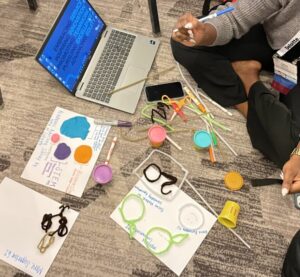
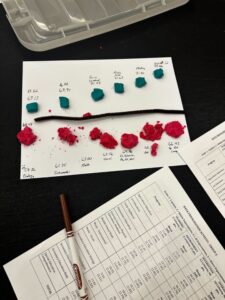
Sharing with others, learning together
Abacus attendees also presented their research posters. This allowed them to share their research findings with other AEA attendees.
In addition to their presentations, they could learn about other attendees’ work. Roberts says, “it was really wonderful to talk and share lessons learned and some solutions to challenges we’ve faced when it comes to conducting evaluations.”
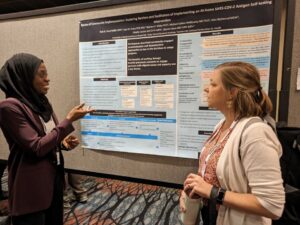
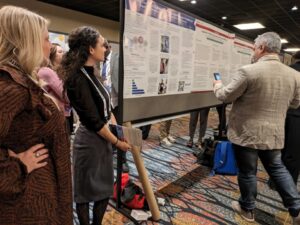
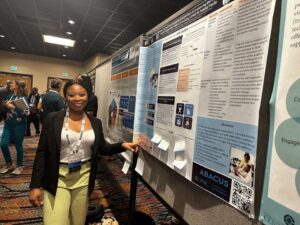
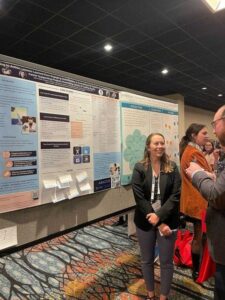
Being together
Another highlight of the trip was all the colleagues being able to spend time with each other. Shelly Maras “enjoyed getting to travel and spend time with my co-workers in person and networking with other evaluators.”
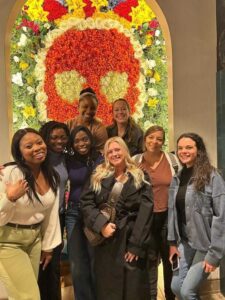
Since CHER and Abacus are primarily remote teams, the conference was an excellent opportunity to build connections with colleagues. To keep a memory of being together, the members made sure to get a group picture.
Hollars says the conference “expanded [her] solution thinking outside of just public health-related research and showed that many strategies can be adapted to fit needs within our work.”
A bonus for everyone was reconnecting with a former Abacus/CHER employee, Rakiah Anderson.
The AEA conference was the perfect opportunity to be together and learn together. Attendees left the conference feeling motivated in evaluation studies and closer to one another than before.
